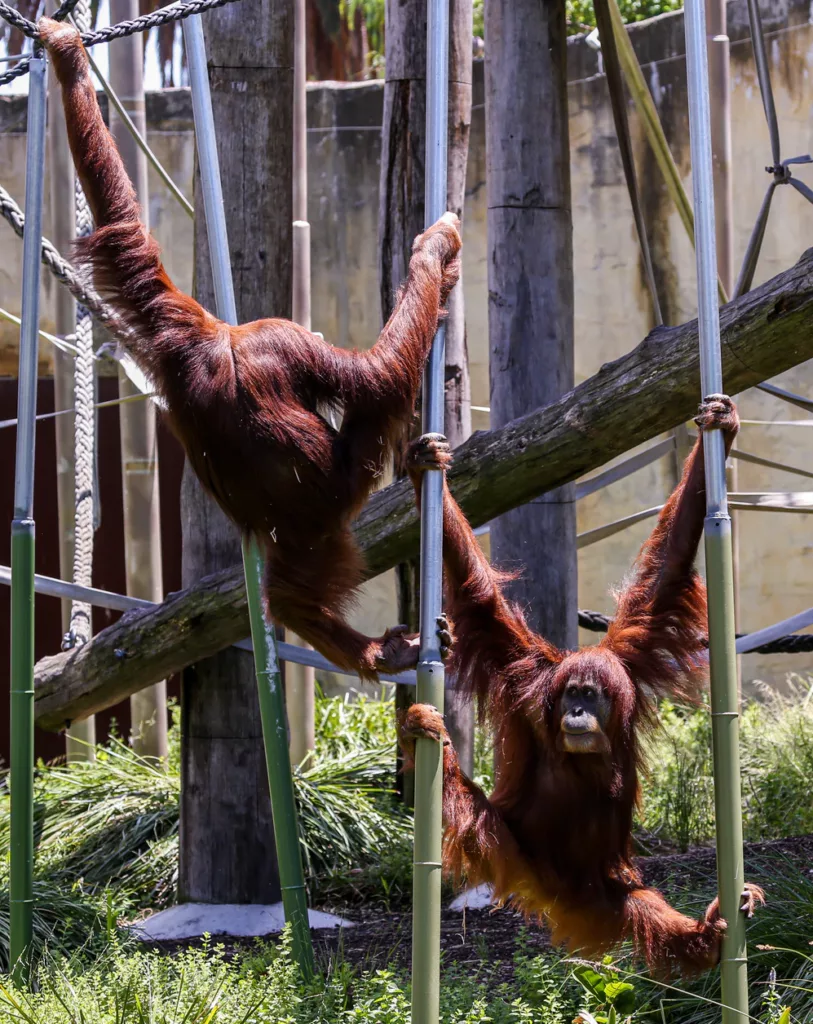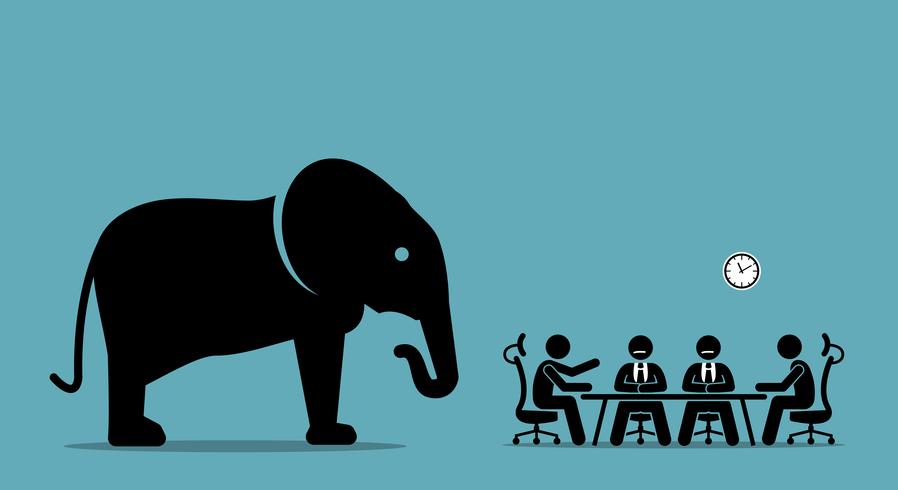The Most Important Skill in Animal Care
The act of caring for an animal, whether exotic or domesticated, is generally not that hard, people have been caring for animals for thousands of years, with a great deal of success. However, as we learn more about animal behaviour and as the science around what they really need to thrive, advances, we have started to evolve what the definition of “caring” for an animal really means. This term has evolved from simply keeping an animal alive, to now using the latest science to not only keep the animal alive, but also create an environment where it thrives. With this advancement in animal care standards, comes a need for a completely new skill set that may have not been required or relied upon before in the animal care world.
I believe that modern day animal care relies mainly on one overarching skill; the ability to think critically and rationally about animal behaviour as well as the care that you are providing the animal you are working with.
Why do I think being able to think critically is the most important skill in animal care? Well most of the decisions and actions you take as an animal caregiver are going to depend entirely on your observations and anecdotal evidence from the people around you. In animal care we do not have the luxury of having in depth scientific studies on the behaviour of every animal we are trying to care for, nor do we have the ability to communicate effectively with our animal charges, we often do not even have the ability to effectively interpret the emotional states or overall welfare for most of the species in zoos and aquariums today.
So if we are relying mainly on our interpretation and the anecdotal evidence of those around us for decision making, the need to critically and effectively interpret the data we are collecting via our day to day experiences and observations of an animal, becomes very clear. When caring for a captive animal, we are often responsible for most (if not all) of the variables in their environment, which makes the ability to make good decisions on things like exhibit design and exhibit mates, crucial to the long term welfare and overall success of that animal.
What is Critical Thinking?
Criticalthinking.org defines the act of critical thinking as:
Critical thinking is the intellectually disciplined process of actively and skillfully conceptualizing, applying, analyzing, synthesizing, and/or evaluating information gathered from, or generated by, observation, experience, reflection, reasoning, or communication, as a guide to belief and action.
The Foundation for Critical Thinking
That definition is incredibly broad and is really used to give people a clear guide on what critical thinking looks like over many disciplines, but for in the context of animal care, I think critical thinking can be defined as:
Critical thinking in animal care is the process of conceptualizing, and evaluating the information gathered from or generated by, day to day observation and reflection, previous animal experience, natural history, scientific literature and communication with coworkers as a guide to belief and action.
Based on the above statement it is clear that critical thinking is the process of setting your brain up for successful and “good” decision making by creating systems for day to day information processing. But why do we need critical thinking? Wont my brain just do that anyways? It turns out not exactly.
Avoiding Logical and Emotional Fallacies
The human brain is an impressive biological machine capable of astounding feats of reasoning and conceptualization, but it can also be very flawed from time to time, for example, optical illusions show your brain an image that it cannot rationalize properly and in turn your brain shows you an image that does not actually reflect the real image. While these optical illusions are relatively harmless, your brain can provide more detrimental illusions occasionally, that often show themselves during everyday conversation and reasoning in the form of emotional and logical fallacies.

Emotional fallacies are arguments that are designed to appeal to the emotions in order to avoid logical judgement.
Logical fallacies are false beliefs caused by errors in reasoning.
Let’s see an example of what these fallacies could look like in animal care.
“How could you be against a diet increase for the polar bears? Everyone else on our team supports it. She is currently only eating once a day and looks so sad when you only give her the diet that she is currently being fed”
The first fallacy used in the above sentence is an emotional fallacy called “Bandwagon“, this emotional fallacy is used on an individual to make them feel bad for not getting on a bandwagon and agreeing with a majority, and is very effective in a small team environment such as animal care. The second fallacy used in the sentence is called the “Anthropomorphic fallacy” which is the fallacy of applying human emotions to aspects of nature such as animals. I’m not saying it’s wrong to apply emotions to animals, because they do experience emotions, but does the individual actually know what a sad polar bear looks like? Probably not.
I’m sure readers of this article could adjust the above sentence to fit their specific situations and arguments that they have heard before, as this is a very common way for a novice animal care keeper to construct an argument. The above fallacies are some of the most commonly used in arguments I have heard throughout my career. Here is a few more to look out for on a daily basis as well as some examples of how they might appear:
False Analogy: Comparing two things together that are thought to be similar but are in fact not.
“I observed my dog doing this, so the wolves are also likely to react this way”
Hasty Generalization: Making sweeping generalizations without a large enough sample size.
“I worked with spider monkeys before and they never interacted with enrichment, so this monkey won’t like enrichment either”
Scare tactics: Arguing that a specific position must be taken in order to avoid problems.
“Animals die from enrichment devices so we shouldn’t give our animals enrichment”
Argumentum ad Hominem: Attacking someone’s character in order to prove an argument.
“Management is greedy and don’t care about animals therefore we shouldn’t support this decision”
There are many more of these fallacies, but these are some of the most common ones you are likely to hear used on a daily basis.
What Makes a Decision “Good”?
The point of learning these fallacies is so that you may easily identify them being used in team meetings and even in your own arguments to sway the audience one way or another. Decisions that are brought about based on these fallacies will almost never be “good” decisions as they are almost always completely devoid of logic and evidence, so being able to spot when these fallacies are being used to fuel a decision can be an extremely useful skill.
Logical, critical and pragmatic, these are the three components that separate a “good” decision from a “bad” decision. Whether a decision turned out to be the right one or the wrong one does not make a decision fundamentally “good” or “bad” due to the fact that as animal care staff, we are often operating without “handbooks” on how to set up an animal introduction plan or an enrichment plan we must simply operate on the best evidence and logic we can pull together through carefully analyzed anecdotes free from logical or emotional fallacies and instead, approach the problem through practical and well thought out means.

How to Make Better Decisions and Avoid Being an “Emotional Elephant”
So how does one actually go about making better decisions? This, like many other things in animal care, is a skill that can be learned and practiced throughout your career, and one that should be at the forefront of your mind to develop. It is often thought that experience (sometimes referred to as seniority) is the primary driving factor toward making good decisions and people with less experience are not taken seriously or their opinions are held at less than face value in decision making meetings. This tendency is something thats not only irresponsible, but also completely false. “Experience” as a whole is irrelevant when not given context, if someones experiences and interpretation of those experiences is largely based on some of the fallacies that we previously talked about, then it’s not at all an indicator of a superior knowledge bank that will result in better decision making. In fact the act of stating something is true based on the fact that an “expert” said it was true, is in fact a logical fallacy called an “Appeal to Authority“. So one of the first steps you can take to making better decisions is by using all the data sources you have at your disposal including someone that you might view as less experienced than yourself or those around you.
As we stated before, good decisions are logical, critical and pragmatic. Let’s start with being logical and critical. Always start any decision making process by running through your primary arguments for your decision with your team or in your head and analyze them for any of the fallacies we discussed previously and ask yourself if this is a logically sound argument. What data sources are informing this decision? If all of the data you are using is anecdotal from your experiences, you might want to get another opinion or look at the literature for more data sources to avoid bias the best you can.
Listen to your team and the people around you more than you speak. When you are listening you are getting twice the amount of information, you are getting the information you are listening to and the information coming from your own thoughts. If you are the only one speaking, or the one saying the most in a meeting, take the time and let other people speak incase you are bulldosering other peoples opinions without even realizing it. Another thing you can do in a meeting is assess your reaction when your opinion is challenged. If you immediately get emotional and defensive then you might be an “emotional elephant” in the room. I think this is one of the worst things to have in the meeting, emotional elephants grind all effective decision making to a halt as they won’t allow their opinions to be challenged and criticized. When people get emotional in a debate, they often have the tendency to lean on logical fallacies such as Argumentum ad Hominem to hide the fact that their argument was not at all based on being logical, critical and pragmatic. Great decisions are often the brainchild of healthy debate so do not be married to your opinions, they do not define you, drop them at the first sign of weakness.
Emotional elephants often will raise their voices in meetings to make sure they are the ones being heard over everyone else, further bulldozing other peoples options and data points. They often find themselves stuck on one particular point of an argument instead of looking at the problem as a whole and finding the best solution. An inability to effectively take criticism will often lead these individuals to just make decisions on their own instead of consulting with their team or the appropriate chain of command, which is often detrimental to the animal as well as inter-team and interdepartmental trust.
The last part of a “good” decision is that it has to be pragmatic. This is one that is often over looked or not taken seriously in large institutions such as zoos and aquariums. Pragmatic decisions are ones that are actually practical and straightforward by design, they aren’t overcomplicated, unrealistic and even impossible. When you work in a large institution you need to be aware of the potential need for other departments’ involvement in your decision and adjust timelines and the details of the decision accordingly.
How to Teach Others to be Objective
Teaching others to be objective and to ultimately make better decisions is a very important thing for a team leader to keep in mind at meetings and in day to day decision making. One of the first steps a leader can take toward making sure their team makes good decisions is to actually talk about some of the above information that has been presented in this article. Talk about logical and emotional fallacies and how to avoid them, steer meetings toward effective and critical discussion and do not let your team get stuck in the weeds of ineffective discussion. Identify the emotional elephants on your team (make sure you’re not one yourself) and try to experiment with ways of getting them involved in critical discussion more often and steer them away from fallacies and emotion and toward logic and reasoning.
The best teams are always created when fostering a space of discussion and debate where everyone can present their ideas and opinions without fear of being ridiculed or immediately shot down.
Another practice to get in the habit of doing, is admitting that you don’t know the answer to certain questions that might be raised during the decision making process. Instead of admitting that they don’t know the answer, emotional elephants will often try to come up with an answer that is based on flawed interpretation of personal anecdotes or fallacies. When asked how you think an animal is going to react to an enrichment item, answering with “I’m not sure, but I don’t see any potential harm in trying” is always going to be a better answer then “I gave my dog at home something similar and they loved it so I’m sure the tiger will love it as well”.
Conclusion
The most important thing to keep in mind with decision making in animal care is that, emotional elephant or not, everyone in this industry is making decisions based on the fact that they think the decision is going to benefit the animal. Even if you have no idea how someone could make a certain decision, you can generally say with confidence that they made the decision because they thought it was the right one for the animal at the time, not because they are trying to deliberately harm animal welfare. The purpose of this article is not to divide teams or to pit people against one another, it is to provide a roadmap for people to use to make better decisions that will hopefully improve animal welfare as a whole.
References and further reading
- Logical and Emotional Fallacies
- A concept of critical thinking
- The Foundation for Critical Thinking
- Anthropomorphism and Consumer Behavior
- Ground rules for dealing with anthropomorphism
- Zoomorphism and anthropomorphism: fruitful fallacies?
- Cognitive bias as an indicator of animal emotion and welfare: Emerging evidence and underlying mechanisms
- The perils of anthropomorphism


Hi Kyle,
I hope you have been well.
Thank you, this is a great article – well done! Matt shared it with our entire team.
Kind regards,
Jim Moloney
Hi Jim,
Thanks for the kind words, I am glad you liked it!
All the best,
Kyle